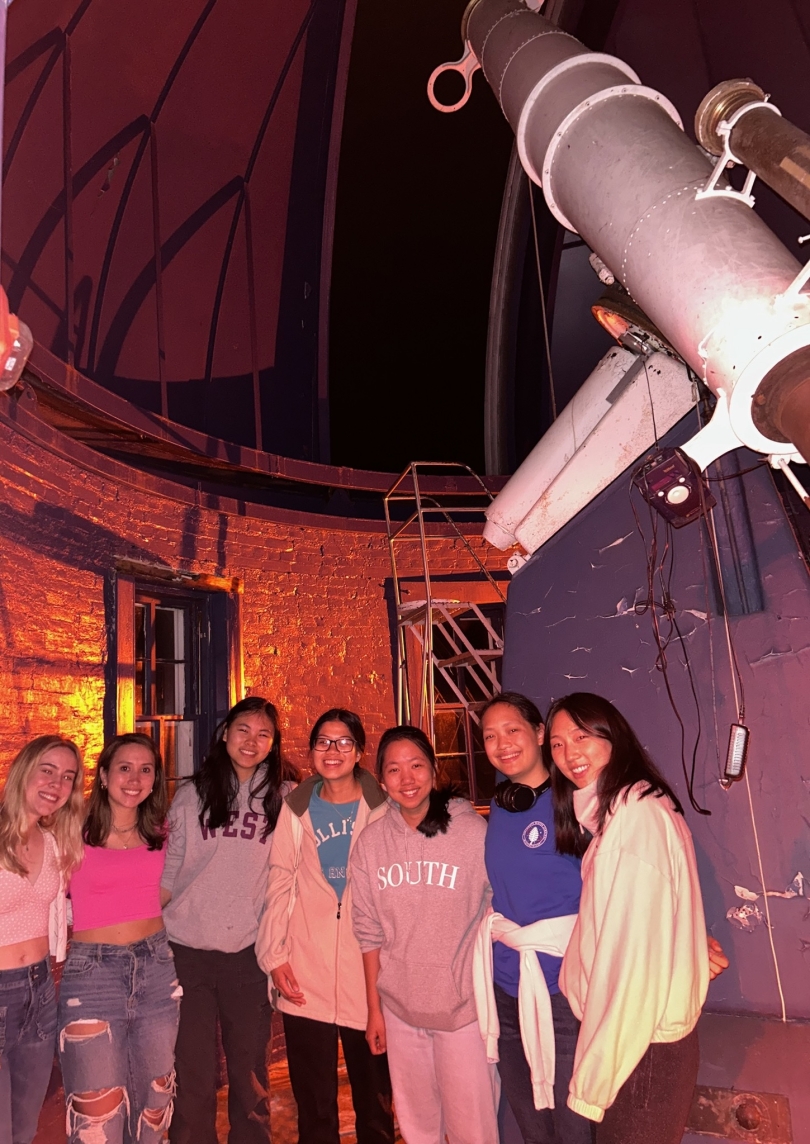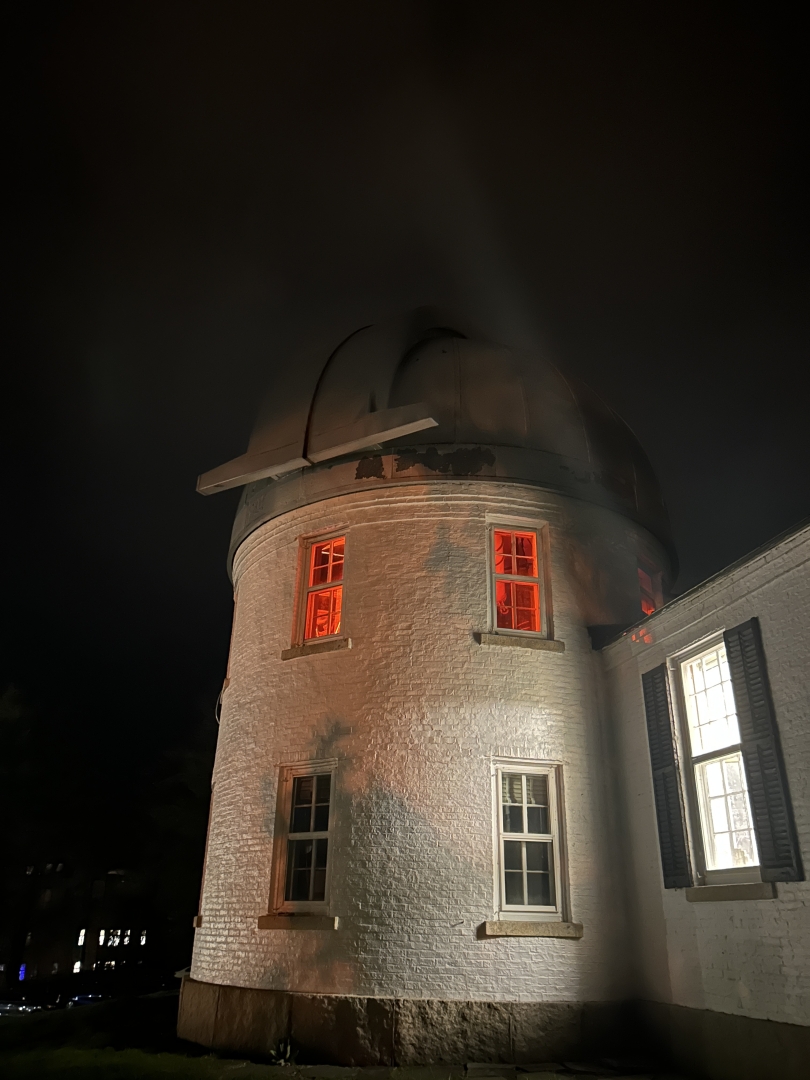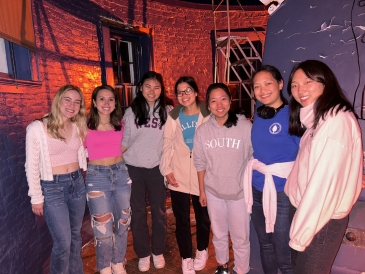
Starry Scenes from Shattuck Observatory
I first heard about the Shattuck Observatory during my sophomore summer. Shortly after, the observatory was closed for some time, so I never got to explore. However, the stars aligned this week, and I participated in an observatory viewing hosted by the Women in Science Project (WISP).
The observatory is located at the edge of campus, up the road from the Alumni Gym and near the Big Empty Meeting Area (BEMA). Shattuck is one of the coolest-looking buildings on campus, as evidenced by this shot of the iconic dome against the night sky.
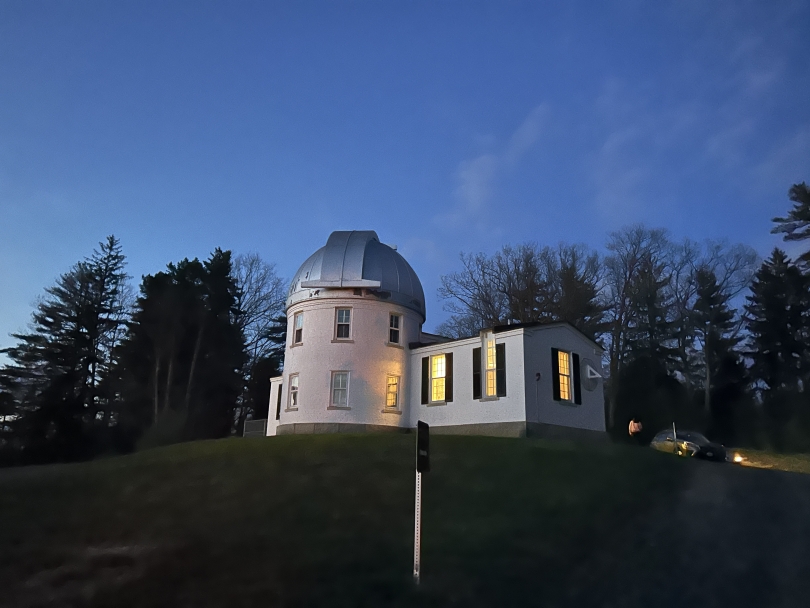
The tour started at 8:30 pm and was led by Professor Hans Mueller from the Department of Physics and Astronomy. I have often walked past Shattuck Observatory but never stopped to wonder what was inside. I was blown away by each room that I entered. For starters, the observatory lobby featured several professors' offices! A plaque on the lobby wall also showcased the observatory's founding date in 1854, making it 170 years old!
As I later learned from Professor Mueller, Shattuck is the oldest scientific building on campus. He also showed us a picture of the observatory from the 1900s. Not much has changed since then, though a Robert Frost Statue has replaced the gazebo pictured on the right. Another notable difference is that the dome of the observatory was replaced. It actually originally rotated on cannon balls.

The next part of the tour took us to a small room on the side of the lobby. This room exhibited two small telescopes used to tell time and a collection of grandfather clocks. Professor Mueller joked that the room had been converted to an office, and he sometimes feared knocking into a telescope if he leaned too far back on his chair.
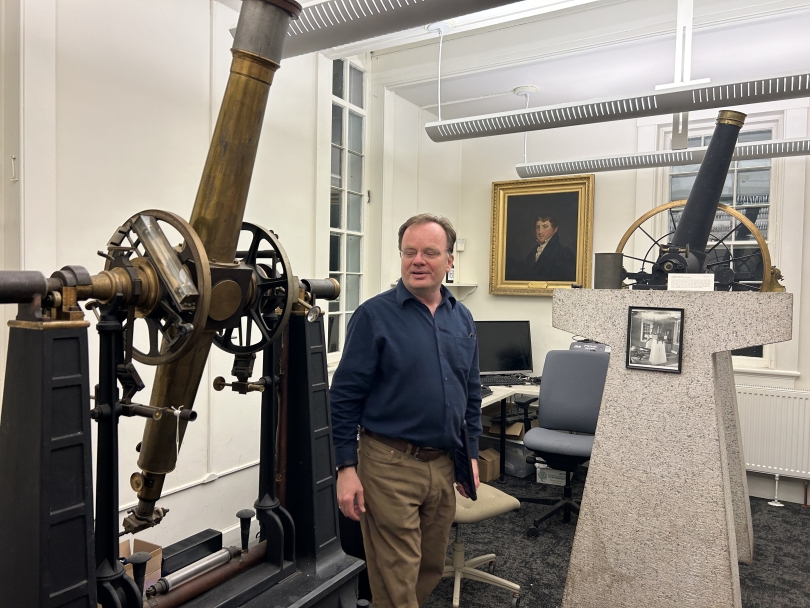
Next, the group headed up the stairs into a dark room with a massive telescope. The room was initially dark until Professor Mueller turned on a red light. He explained that it was best to use this particular light to protect the telescope. I couldn't help but admire how massive and beautiful the telescope was in the dim lighting. Professor Mueller pointed out some challenges of maintaining the telescope during the New England winters between hibernating squirrels, chipped paint, and collecting dust. I thought it was fantastic, regardless.
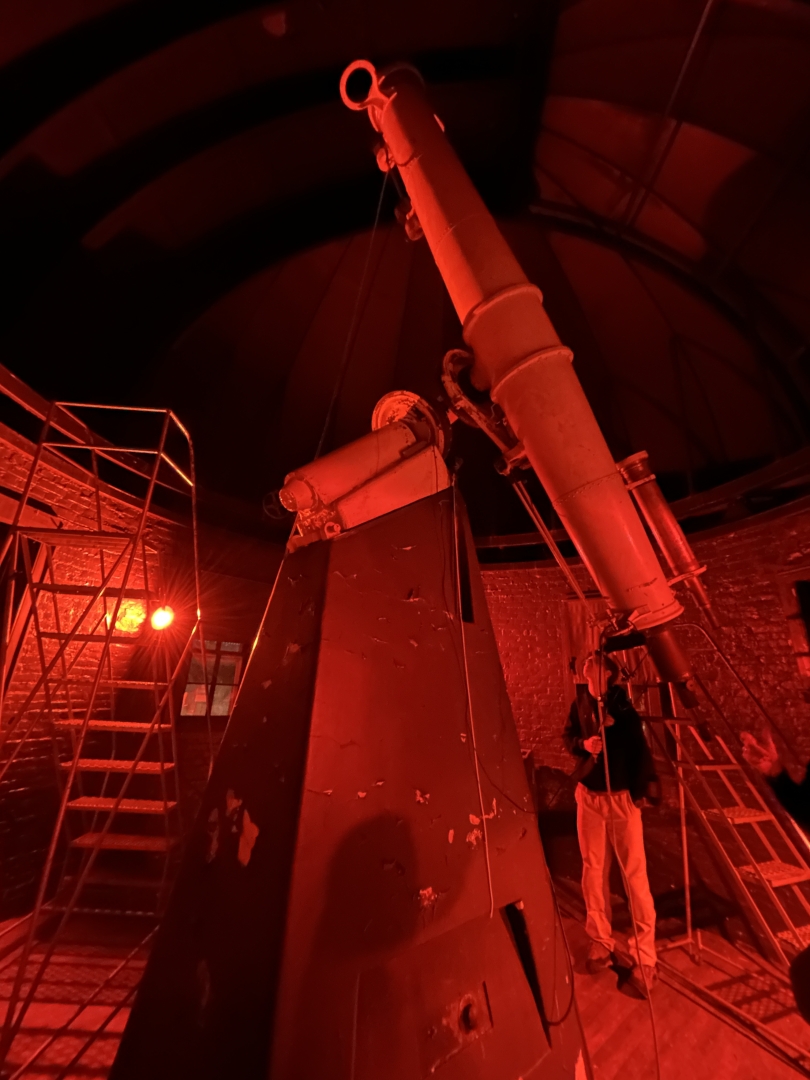
Unfortunately, we had picked a cloudy day, and not a single star was in sight. However, getting inside the observatory is not usually part of the tour, so I was grateful for the opportunity to even get to the top floor. The best part by far, though, was when Professor Mueller started tugging on a small crank accessed through the ladder to the left of the telescope, revealing a sliver of the sky.
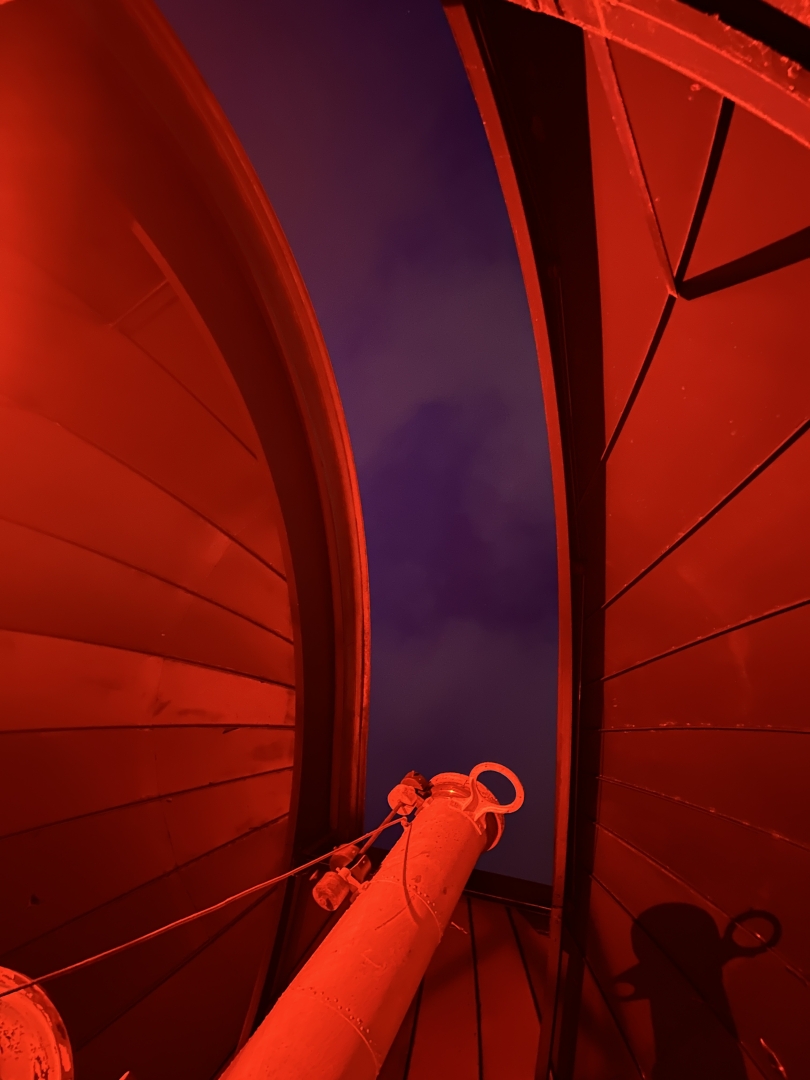
The tour was still not complete! For the last part, the group went to a small shed where most public observations are held. Graduate student Luca walked us through the mechanics of the mirror telescope, which was smaller in size than the telescope in the observatory, though more precise and easier to control.
The mirror telescope was also connected to a computer system, which allows observers to blow up images of stars and planets. As Professor Mueller explained, conducting research with these instruments is difficult given the New England weather. But astronomy at Dartmouth reaches all around the world! Dartmouth has timeshares in Arizona and South Africa, providing better viewing settings given the clearer skies and limited light pollution. He also mentioned that researchers can request digital files from the Hubble telescope.
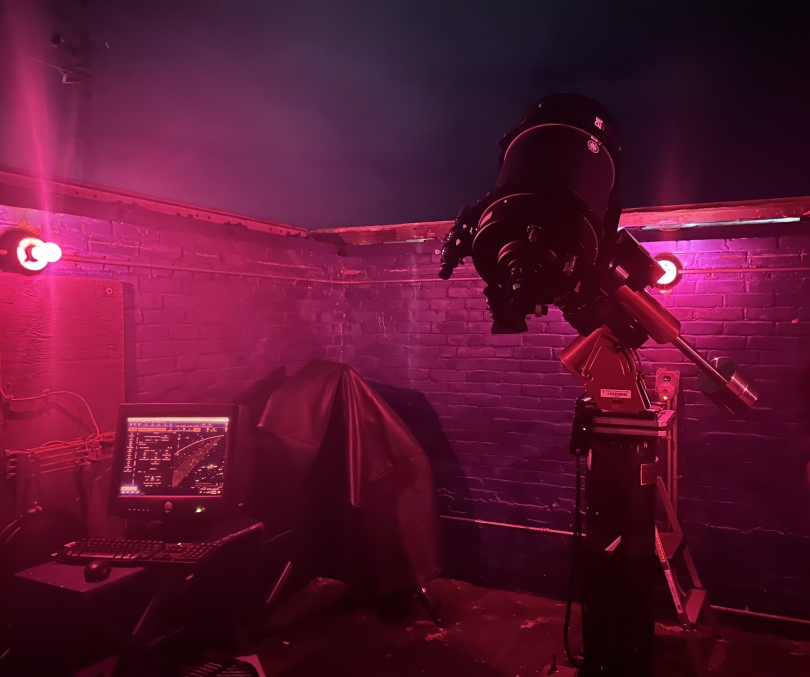
The Shattuck Observatory is a fantastic resource for students interested in studying physics and astronomy at Dartmouth. It's also a great way to learn more about the stars and admire some constellations with friends. Read this article from Dartmouth News to learn more about how the observatory is used in research and class settings.
